30 math problems for 8th graders
The 8th grade offers big challenges for students, but with a little practice, any student can excel. These 30 math problems help students understand the key math topics of 8th grade.

Author
Tess Loucka
Published:
March 2025
Key takeaways
- • Math in 8th grade moves at a faster pace than previous grades and gets increasingly more complex as the year goes on.
- • Word problems, data analysis, statistics, and other 8th-grade math topics require strong visualization skills.
- • Math can be fun if students are given a strong foundation and plenty of opportunities to practice.
30 math problems for 8th graders
8th grade is a big year in math! It compiles the concepts students learned in 6th and 7th grades and builds on them, often at a faster pace than students are used to.
The challenges of 8th grade may be great, but the lessons students learn are irreplaceable. Not only do students gain a deep understanding of the number system, expressions, equations, functions, geometry, statistics, and probability, but they also learn techniques that will help them in all areas of life.
Common concerns with 8th-grade math
In 8th grade, students are tasked with solving increasingly more complex algebraic problems with multiple variables. This can cause a lot of confusion if not properly understood at the beginning of the year.
8th grade also introduces students to geometry. Students must be able to understand concepts such as volume, area, surface area, transformation, angle measures, and more. This requires strong visualization skills that some students struggle to develop.
Practicing math problems for 8th graders is a great way to gain confidence and improve your skills. DreamBox’s math program offers interactive 8th-grade math practice that can make studying fun!
For more practice, this article goes over 30 math problems for 8th graders. This article will cover a variety of questions ranging from simple questions to hard math problems for 8th graders.
Here are our 30 math problems for 8th graders with answers.
Table of contents
Practice 8th Grade Math with DreamBox
Turn math into playtime with DreamBox Math
DREAMBOX MATH
Get started for FREE today!

The number system
Students should know the definitions of whole numbers, natural numbers, integers, rational numbers, and irrational numbers.
Question 1:
Determine whether the following number is natural, whole, integer, rational, or irrational.
√81
Check all that apply.
Natural
Whole
Integer
Rational
Irrational
Question 2: Determine whether the following number is natural, whole, integer, rational, or irrational.
2.7777777…
Check all that apply.
Natural
Whole
Integer
Rational
Irrational
Question 3:
Determine whether the following number is natural, whole, integer, rational, or irrational.
𝛑
Check all that apply.
Natural
Whole
Integer
Rational
Irrational
Expressions and equations
Students should be comfortable working with two-variable equations, radicals, and integer exponents.
Question 4: (-5) + (-9) =
Question 5: (-1/2) + (-2/3) =
Question 6:√144
Question 7: If x^2 = .36, what is the value of x?
Question 8: What is the ∛343?
Question 9: Which expression has the value of -4?
A. |-3| + |1|
B. |-1| – |-3|
C. |6| – |-2|
D. |-2| – |-6|
Question 10: What is the value of 14 + 2(10 – 4)^2 ?
Question 11: What is the slope of this linear equation?
y = 4x + 6
Question 12: Solve for y in terms of x:
5x + 3y = 15
Question 13: How is 0.4200 written in scientific notation?
Functions
8th graders should understand how functions work and be able to define, analyze, and create functions using data sets and word problems.
Question 14: Is this set of ordered pairs a function?
(1, 12)
(3, 16)
(3, 18)
(1, 20)
Question 15: Is this data an example of a function?
3, 6
6, 9
9, 12
12, 15
Question 16: Find the value of f(3) if f(x) = 2x^2 + 8x – 2
Functions word problems
These math word problems for 8th graders cover key information students should know in the category of functions.
Question 17: A math teacher gives her students 2 quizzes every month.
Write a function that explains the relationship between the number of months elapsed, x, and the total number of quizzes students have to take, y.
Question 18: Alex holds his balloon 4 feet above the ground. He lets go of his balloon and watches it rise into the sky. The balloon rises by 3 feet every second.
Write a function that explains the relationship between the balloon’s elevation in feet, y, and the number of seconds it has been rising, x.
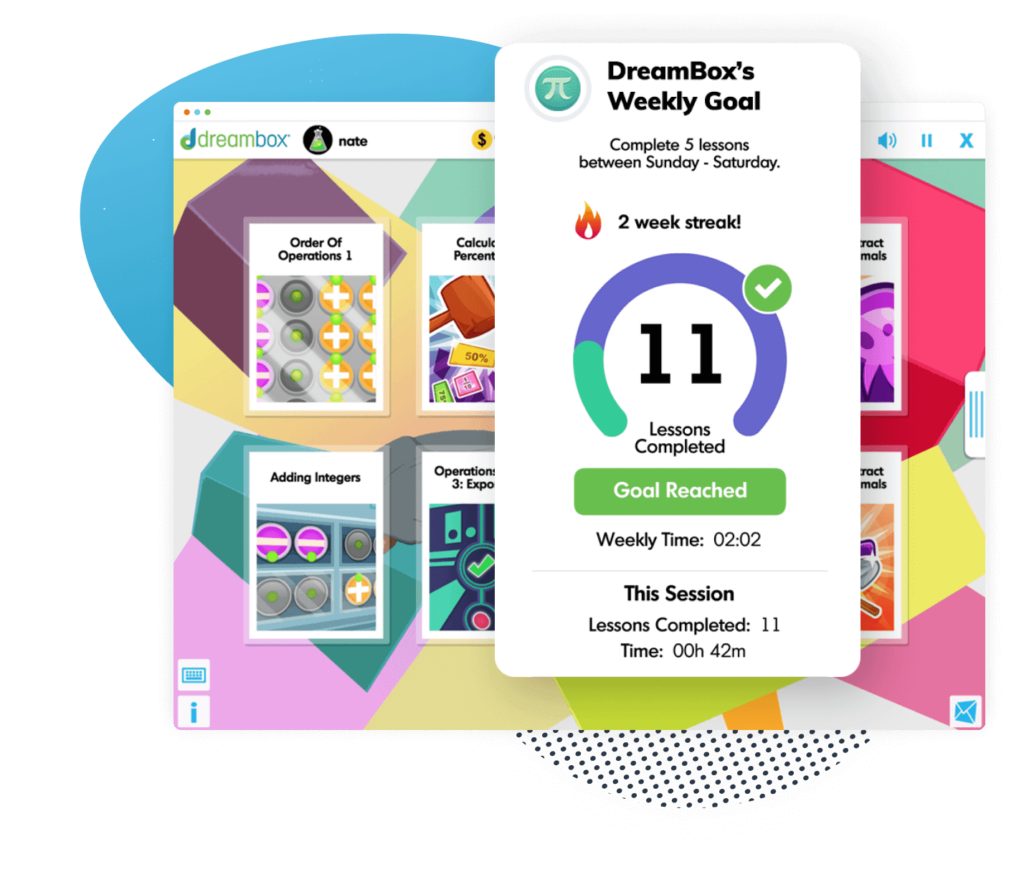
The math program that drives results
Get started today!
DreamBox adapts to your child’s level and learning needs, ensuring they are appropriately challenged and get confidence-building wins.
Geometry
Question 19: Rectangle ABCD is similar to rectangle EFGH. What is the value of x?
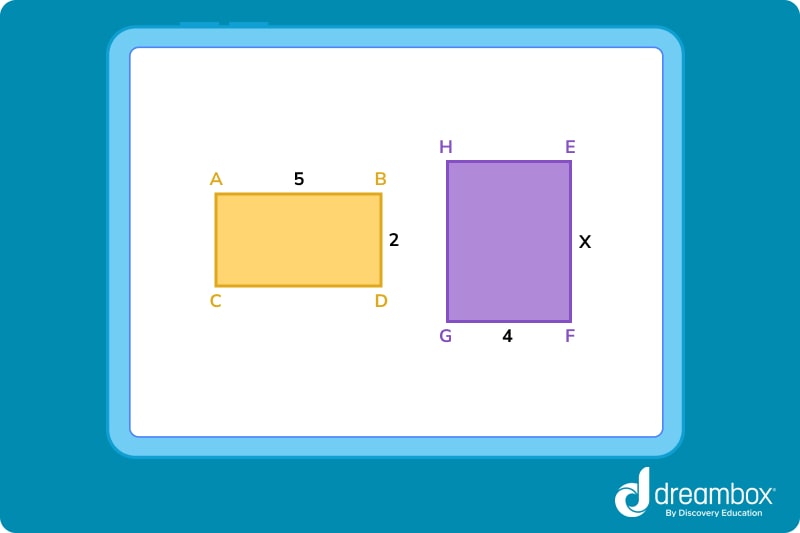
Question 20: Lines e and f are parallel. Which angle is supplementary to angle 6?
A. Angle 7
B. Angle 8
C. Angle 2
D. Angle 3
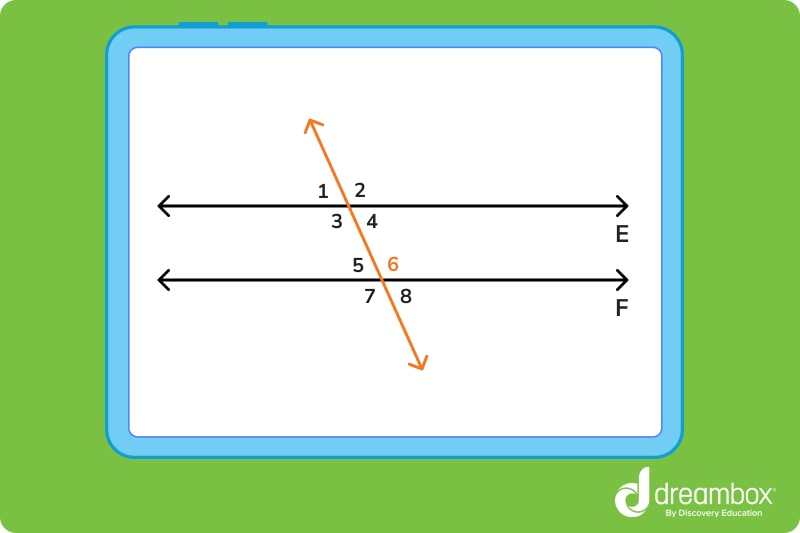
Question 21: Using the Pythagorean Theorem, what is the value of x?
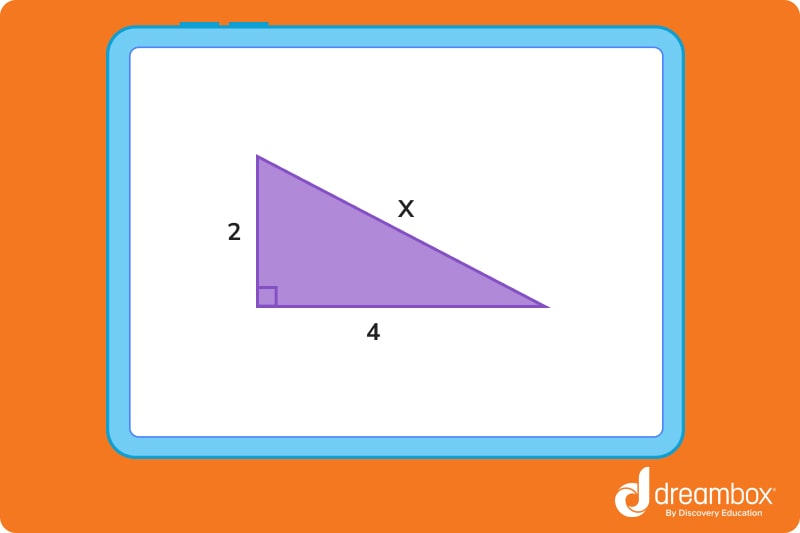
Question 22: If angle 2 measures 35 degrees, what is the measure of angle 1?
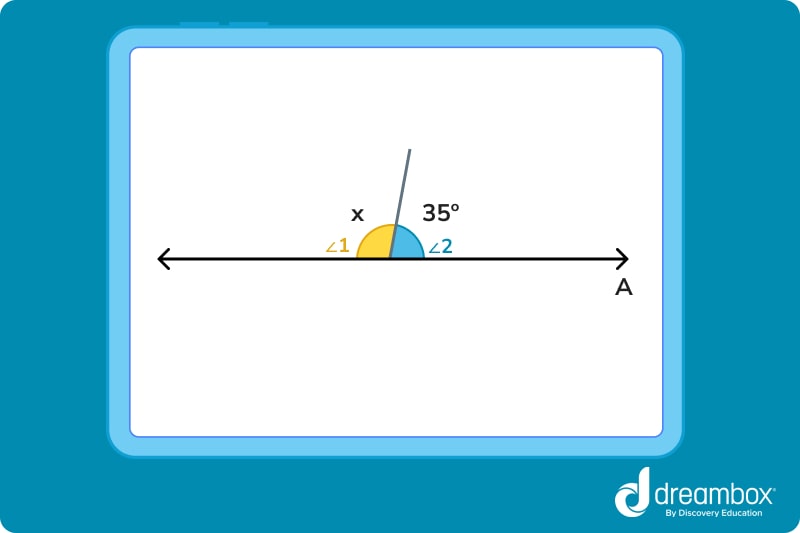
Question 23: Calculate the volume of the following shape.
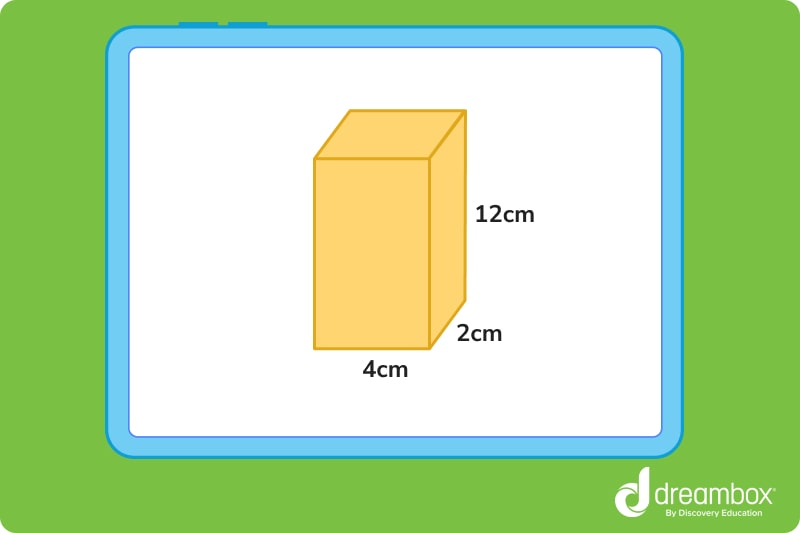
Statistics and probability
In 8th grade, students learn to analyze data sets and make predictions based on the rules of statistics and probability.
Question 24: Which of the following most likely represents an outlier on a scatter plot that relates women’s age to their shoe size?
A. (24, 8)
B. (20, 7)
C. (18, 6)
D. (21, 8)
E. (18, 13)
Question 25: Which of the following represents a scatterplot with a negative association?
A. x increases and y increases.
B. x increases and y decreases.
C. x increases and y stays the same.
D. x decreases and y decreases.
Statistics and probability word problems
These tricky math problems for 8th graders test their ability to visualize different situations and data sets. Visualization is key! Feel free to draw or take notes while answering.
Question 26: A scatterplot correlates the ages of trees to their height in feet. What does the point (14, 42) on the scatterplot represent?
Question 27: Amy is rolling a 6-sided die. What is the probability she rolls a 6 two times in a row?
Question 28: Justine is eating lunch with her mom. She has the option of 5 different drinks (soda, tea, juice, milk, water), 3 main courses (hamburger, grilled cheese, chicken soup), and 2 sides (French fries, salad). How many different meal combinations are possible?
Question 29: If you roll two 6-sided dice and flip a coin, how many possible outcomes are there?
Question 30: If Billy is holding a deck of 52 cards, what is the probability he pulls a 10 out of the deck at random?
Express your answer as a decimal rounded to the nearest hundredth.
Answer sheet
Before taking a look at the answer sheet, do your best to answer the questions above! Don’t check the answers until you’ve done your best to find the answer yourself.
The number system
- 1. √81 = 9.
9 is a natural, rational, whole number. It is also an integer. Since it is a whole number, it is not irrational.
- 2. 2.77777 is not a natural number or a whole number because it has a decimal. It is not a whole number, so therefore, it is not an integer. It is rational because its decimal repeats.
- 3. Pi is an irrational number because its decimal never repeats. It is not a natural number, whole number, integer, or rational number.
Expressions and equations
- 4. -14
- 5. -7/6 or -1 1/6
- 6. 12
- 7. x = .6
- 8. 7
- 9. D
- 10. 86 (Remember PEMDAS!)
- 11. 4
- 12. Y = -5/3x + 5 or y = 5 – -5/3x
- 13. 4.2 x 10^-1
Functions
- 14. No – There can only be one output for every input!
- 15. Yes
- 16. 40
- 17. f(x) = 2x
- 18. f(x) = 3x + 4
Geometry
- 19. x = 10
- 20. B
- 21. Square root of 20
- 22. 145 degrees
- 23. 96cm (Don’t forget the unit!)
Statistics and probability
- 24. E
- 25. B
- 26. One 14-year-old tree is 42 feet tall.
- 27. 1/36
- 28. 30
- 29. 72
- 30. 0.07
Take at home math practice to the next level
Empowering parents and educators to make math practice more impactful. Plus, your kids will love it.


About the Author
Tess Loucka
Tess Loucka discovered her passion for writing in high school and has not stopped writing since. Combined with her love of numbers, she became a math and English tutor, focusing on middle- and high-school-level topics. Since graduating from Hunter College, her goal has been to use her writing to spread knowledge and the joy of learning to readers of all ages.